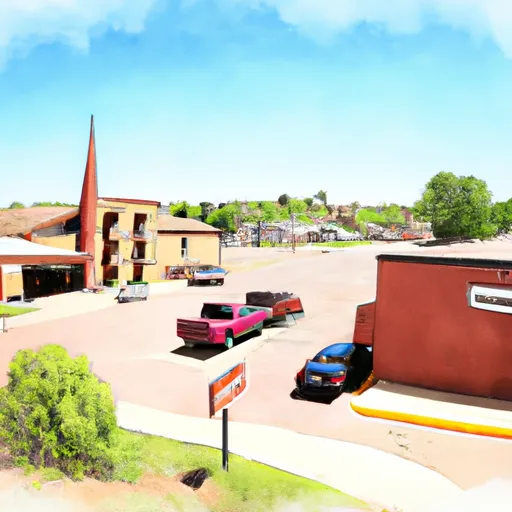-
 Snoflo Premium
Snoflo Premium
Get unlimited access to all our content
With no Ad interruptions! - Start Your Free Trial Login with existing account
Mesita
Eden Index
Climate
6.8
•
Recreation
4.5
•
Community
•
Safeguard
4.3/10

Mesita is a small town located in the San Luis Valley of southern Colorado. It has a semi-arid climate, characterized by relatively hot summers and cold winters. The town experiences low precipitation, with an average annual rainfall of around 7 inches and snowfall of approximately 26 inches. Summers are typically warm, with temperatures reaching the high 80s°F, while winters can be cold, with temperatures dropping to the low 20s°F.
As for hydrology constituents, Mesita is near the Rio Grande River, which serves as a major water source for the region. The river's water flow is primarily derived from snowmelt in the nearby mountains.
Outdoor recreation opportunities in Mesita and its surrounding areas are abundant. The Rio Grande National Forest is nearby and offers activities such as hiking, camping, fishing, and wildlife viewing. Additionally, the Great Sand Dunes National Park and Preserve is within driving distance, providing opportunities for sandboarding, hiking, and stargazing. Mesita's location in the San Luis Valley also offers beautiful landscapes and opportunities for birdwatching, photography, and exploring the unique desert-like environment.
What is the Eden Index?
The Snoflo Eden Index serves as a comprehensive rating system for regions, evaluating their desirability through a holistic assessment of climate health, outdoor recreation opportunities, and natural disaster risk, acknowledging the profound impact of these factors on livability and well-being.
Climate Health Indicator (CHI): 6.8
Mesita receives approximately
266mm of rain per year,
with humidity levels near 69%
and air temperatures averaging around
6°C.
Mesita has a plant hardyness factor of
5, meaning
plants and agriculture in this region thrive during a short period during spring and early summer. Most
plants will die off during the colder winter months.
By considering the ideal temperature range, reliable water supplies, clean air, and stable seasonal rain or snowpacks, the Climate Health Indicator (CHI) underscores the significance of a healthy climate as the foundation for quality living.
A healthy climate is paramount for ensuring a high quality of life and livability in a region, fostering both physical well-being and environmental harmony. This can be characterized by ideal temperatures, reliable access to water supplies, clean air, and consistent seasonal rain or snowpacks.
Weather Forecast
Streamflow Conditions
Upper Rio Grande
Area Rivers
Upper Rio Grande
Snowpack Depths
Upper Rio Grande
Reservoir Storage Capacity
Upper Rio Grande
Groundwater Levels
Recreational Opportunity Index (ROI): 4.5
The Recreational Opportunity Index (ROI) recognizes the value of outdoor recreational options, such as parks, hiking trails, camping sites, and fishing spots, while acknowledging that climate plays a pivotal role in ensuring the comfort and consistency of these experiences.
Access to outdoor recreational opportunities, encompassing activities such as parks, hiking, camping, and fishing, is crucial for overall well-being, and the climate plays a pivotal role in enabling and enhancing these experiences, ensuring that individuals can engage in nature-based activities comfortably and consistently.
Camping Areas
| Campground | Campsites | Reservations | Toilets | Showers | Elevation |
|---|---|---|---|---|---|
| La Sombra | 13 | 7,789 ft | |||
| Cebolla Mesa | 5 | 7,372 ft | |||
| Montoso - Wild Rivers Rec Area | None | 7,500 ft | |||
| Twining | 4 | 9,405 ft | |||
| Little Arsenic Springs | None | 7,498 ft | |||
| Capulin | 11 | 7,758 ft | |||
| Las Petacas | 9 | 7,389 ft | |||
| El Aguaje - Wild Rivers Rec Area | None | 7,467 ft | |||
| Taos Junction | None | 6,071 ft | |||
| Lower Hondo | 4 | 7,880 ft |
Nearby Ski Areas
Catastrophe Safeguard Index (CSI):
The Catastrophe Safeguard Index (CSI) recognizes that natural disaster risk, encompassing floods, fires, hurricanes, and tornadoes, can drastically affect safety and the overall appeal of an area.
The level of natural disaster risk in a region significantly affects safety and the overall livability, with climate change amplifying these risks by potentially increasing the frequency and intensity of events like floods, fires, hurricanes, and tornadoes, thereby posing substantial challenges to community resilience and well-being.
Community Resilience Indicator (CRI):
The Community Resilience Indicator (CRI) recognizes that education, healthcare, and socioeconomics are crucial to the well-being of a region. The CRI acknowledges the profound impact of these elements on residents' overall quality of life. By evaluating educational resources, healthcare accessibility, and economic inclusivity, the index captures the essential aspects that contribute to a thriving community, fostering resident satisfaction, equity, and social cohesion.

